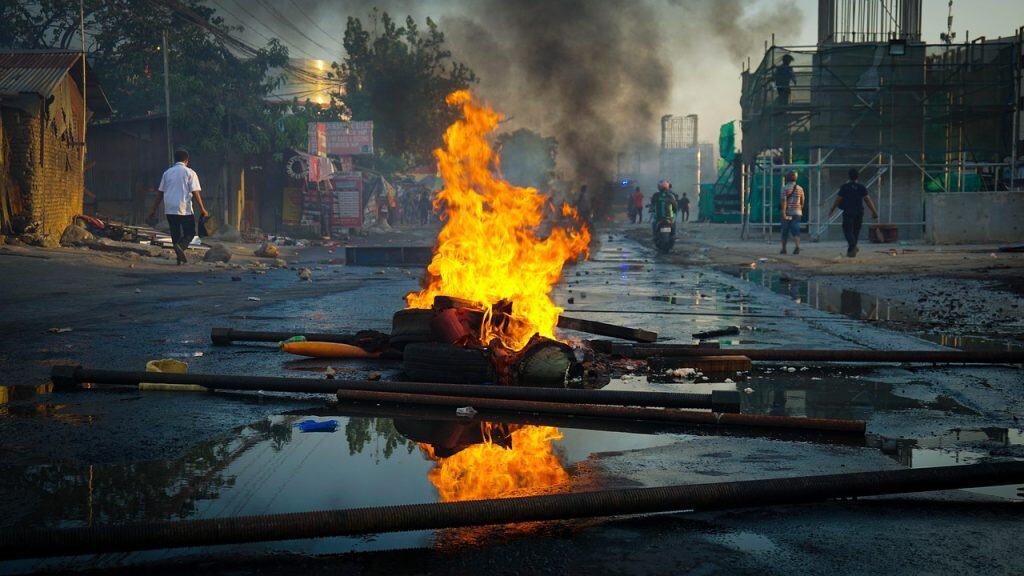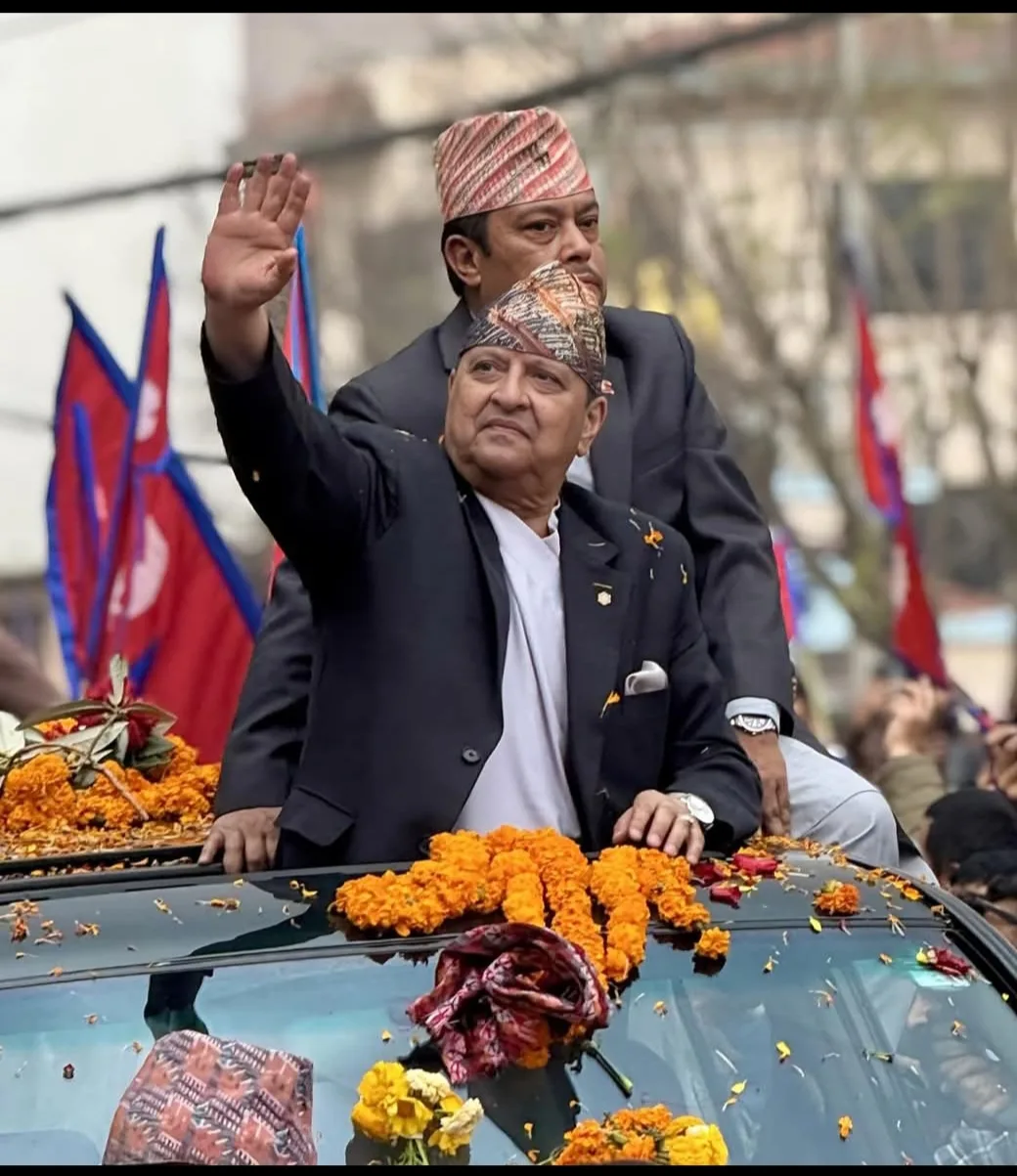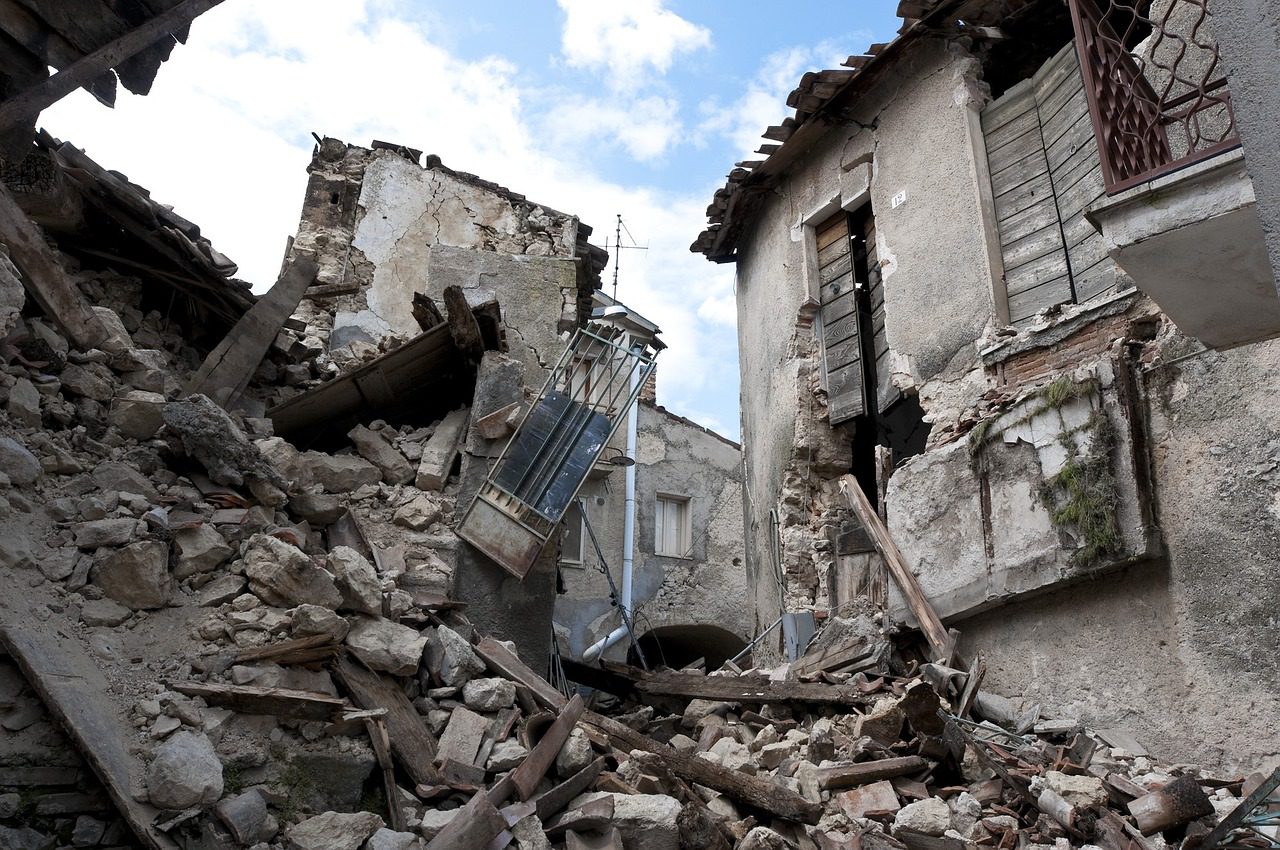Nepal stands at a crossroads of history, culture, and politics. For decades, the nation has witnessed intense debates over the role of its monarchy, the legacy of its kings, and the identity of the Nepali state. Today, whispers of a revival echo throughout the Himalayan kingdom, and many believe that former King Gyanendra could be making his way back to the throne within the next three months. In this comprehensive analysis, we explore the historical significance of Nepal’s monarchy, the current political and socio-economic landscape, and the compelling reasons behind the push for the king’s return. This detailed blog post draws from authentic sources, scholarly research, and current events to present a well-rounded case for reinstating the crown.
Historical Significance of Nepal’s Monarchy
Nepal’s monarchy is not just an institution; it is woven into the nation’s very fabric. The monarchy has long been a unifying force that provided stability and continuity through tumultuous times. With its roots tracing back to ancient dynasties, the royal lineage has been instrumental in shaping the cultural and political evolution of the country.
A Legacy of Unity and Identity
Historically, the monarchy was a symbol of national identity and pride. Kings were seen not only as political leaders but as custodians of Nepali culture and tradition. Their reign was characterized by efforts to preserve cultural heritage, promote social welfare, and ensure the unity of diverse ethnic and linguistic groups. In many respects, the monarchy was the glue that held the country together.
Former King Gyanendra, despite the controversies that marked his reign, remains a figure who evokes strong emotions among a significant section of the Nepali populace. His tenure is remembered by many as a period where royal authority provided clear direction during moments of national uncertainty. His eventual abdication and the shift to a republican system have left a void in the hearts of those who believed in the symbolic power of the crown.
The Role of Tradition in Modern Governance
In modern political discourse, the debate over reinstating the monarchy is not merely about nostalgia. It is about reintroducing a unifying symbol that can bridge the divides created by factional politics and corruption. For many, the return of the king would represent a return to values of integrity, honor, and continuity—a stark contrast to the partisan conflicts that have increasingly defined Nepal’s political scene.
Numerous opinion pieces and editorials in publications like The Kathmandu Post and The Himalayan Times have highlighted the erosion of trust in current political institutions. The idea of a revered monarch, with a reputation for upholding tradition and unity, appears to be a viable alternative to the fractured leadership witnessed today.
The Current Political Climate in Nepal
Nepal’s political landscape is at a pivotal moment. The country is grappling with economic challenges, political instability, and a crisis of identity that has left many citizens yearning for a return to a system they perceive as having a more stable past.
Political Instability and Fragmentation
Over the past decade, Nepal has experienced a series of political upheavals. The transition from a monarchy to a republic was expected to usher in a new era of democratic governance. However, the post-monarchy period has been marred by factionalism, bureaucratic inefficiencies, and a series of short-lived administrations that have struggled to meet the aspirations of the people.
The political instability is compounded by internal conflicts among various political parties. In many opinion columns, including those featured on Kalika Blogs, commentators argue that the current leadership is more interested in power-sharing than in nation-building. They claim that the discord among political leaders has hampered progress on critical issues such as economic reform, infrastructure development, and social justice.
Socio-Economic Challenges and National Sentiment
Nepal’s economy has faced numerous challenges, from high unemployment rates to inadequate infrastructure development. Despite the country’s natural beauty and rich cultural heritage, economic progress has been stunted by political uncertainty. Many experts believe that a more centralized, respected authority could provide the stability necessary for sustainable growth.
Surveys and focus group discussions conducted across the nation reveal a significant segment of the population that longs for the days when the monarchy provided a sense of order and predictability. These studies often cite the lack of clear leadership as a major hindrance to effective governance. For many Nepalis, the return of a charismatic and unifying figure like King Gyanendra could be the catalyst needed to rejuvenate the economy and restore national pride.
External Observations and Analysis
International observers have often commented on the paradox of Nepal’s situation. While the country has made significant strides in modernizing its economy and infrastructure, the political scene remains mired in conflict and uncertainty. Reports by international news outlets such as BBC News and Al Jazeera have frequently highlighted Nepal’s struggle to reconcile its modern aspirations with its traditional structures.
In the midst of this political and economic turbulence, the proposition of reinstating the monarchy offers a seemingly radical yet compelling solution. Advocates argue that a return to a system with a clear, unchallenged authority could cut through the gridlock that has characterized Nepal’s recent history.
Economic and Social Implications of the King’s Return
The potential return of King Gyanendra is not merely a political issue—it carries significant economic and social implications that could reshape Nepal’s future. Proponents of the monarchy argue that reinstating the king could bring about a new era of stability and progress.
Economic Stability and Growth
One of the primary arguments in favor of the king’s return is the prospect of economic stabilization. A strong, centralized authority is believed to offer a more conducive environment for investment, both domestic and foreign. With clear leadership, the government could implement long-term economic policies without the constant threat of political infighting.
Supporters contend that the monarchy has historically been associated with periods of stability and growth. In the past, the presence of a respected and authoritative figure helped attract investments and maintain a steady economic course. Reinstating the monarchy could inspire confidence among international investors and local entrepreneurs alike.
Moreover, economic reforms under a unified leadership could address critical issues such as infrastructure development, rural poverty, and the modernization of public services. With a renewed focus on national development, the economy could experience a surge in growth, benefiting all sectors of society.
Social Cohesion and National Unity
The societal divide in Nepal has been exacerbated by political instability and the constant jockeying for power among competing parties. The monarchy, by contrast, has long been a symbol of unity. A return to the crown could help mend social fissures and bring together communities that have long felt marginalized by partisan politics.
For many Nepalis, the king represents a neutral and unifying figure—someone who transcends the often bitter ideological divides of modern political discourse. His return could foster a renewed sense of national pride and collective identity, which in turn might lead to improved social cohesion.
Economic stability and social unity are closely interlinked. A harmonious society is better positioned to tackle economic challenges and to work collectively toward the nation’s progress. In this context, reinstating the monarchy is not just a nostalgic return to the past, but a strategic move aimed at fostering a more integrated and resilient society.
Backlinks to Authoritative Perspectives
To further understand the economic implications of a monarchical restoration, several reputable sources have weighed in on the topic. For instance, economic analyses in publications like The Himalayan Times and The Kathmandu Post have often highlighted the potential benefits of a stable, centralized authority in facilitating long-term economic planning and reforms.
Public Opinion: The Case for Reinstating the King
In any debate about political reform, public opinion plays a crucial role. Recent surveys and interviews conducted across Nepal suggest that a significant segment of the population is in favor of bringing back the monarchy. This section explores the grassroots support for King Gyanendra’s return and the reasons behind it.
A Growing Movement for Change
Over the past few years, social media platforms and public forums have witnessed a growing movement calling for the reinstatement of the monarchy. Many citizens express their disillusionment with the current political system, citing rampant corruption, inefficiency, and an absence of visionary leadership.
The resurgence of monarchical sentiment is often fueled by nostalgia for a time when the king was seen as a benevolent guardian of national interests. For these supporters, the monarchy is not an outdated relic but a dynamic institution that could be modernized to address today’s challenges. Articles on platforms like Kalika Blogs have explored how King Gyanendra’s policies and personal charisma could be reinterpreted in a contemporary context to serve the nation better.
Voices from the Ground
Interviews with citizens in both urban centers and rural communities reveal a consistent theme: a deep-seated desire for strong, decisive leadership that transcends political rivalries. Many respondents recall the past with a sense of fondness and believe that the return of the monarchy would bring back the discipline and integrity that seem to be lacking in modern governance.
Community leaders, scholars, and even former bureaucrats have come forward with compelling arguments in favor of reinstating the king. They point out that a restored monarchy could provide a non-partisan check on political excesses, thereby streamlining decision-making processes and reducing the scope for corruption.
For a deeper dive into these perspectives, see the insightful analysis in this Kalika Blogs article. Here, contributors discuss how the return of a revered figure like King Gyanendra could unify a fragmented society and pave the way for systemic reforms.
The Role of Intellectual Discourse
The debate over the monarchy is not limited to grassroots sentiment. Academics and political analysts have also weighed in on the potential benefits of reinstating the king. Many argue that the institution of monarchy, when reformed and modernized, can coexist with democratic principles. This perspective is based on the idea that the king can serve as a stabilizing force—a symbolic leader who represents the nation’s continuity while the elected government handles day-to-day affairs.
Several scholarly articles, available through academic journals and reputable news outlets, have suggested that a balanced system combining monarchical symbolism with democratic governance could address the deep-seated issues that have hampered Nepal’s progress. Such a hybrid model could harness the best of both worlds, ensuring accountability without sacrificing national unity.
A Vision for National Renewal: Reforms Under a Restored Monarchy

Advocates of reinstating King Gyanendra argue that his return would serve as a catalyst for comprehensive national reforms. This section outlines the reforms and initiatives that could be implemented under a restored monarchy, emphasizing the potential for long-term benefits for Nepal.
Streamlined Governance and Policy Implementation
One of the key arguments in favor of the king’s return is the promise of a more streamlined governance structure. In the current fragmented political environment, decision-making is often slowed by bureaucratic red tape and partisan bickering. A restored monarchy could serve as an authoritative figure to oversee the implementation of long-term policies, ensuring that national priorities are met without interference from short-term political interests.
Under such a system, strategic reforms could be executed with greater efficiency. For example, initiatives focused on infrastructure development, healthcare, education, and tourism could be prioritized and monitored closely, leading to measurable improvements in quality of life. Economic planners argue that a strong central leadership would attract both domestic and international investment, thereby jumpstarting economic growth.
Bridging the Urban-Rural Divide
Nepal is characterized by its diverse geography and socio-economic disparities between urban and rural areas. A reformed monarchy could act as a unifying force that bridges this gap. By leveraging the symbolic capital of the monarchy, the government could launch nationwide development projects aimed at integrating rural communities into the mainstream economy.
The potential for improving rural infrastructure, such as transportation, communication, and access to basic services, is enormous. With a restored sense of national pride and unity, citizens across all regions could work together toward common goals, reducing the inequities that have long plagued the country. These reforms could revitalize the agricultural sector, boost local industries, and promote sustainable development practices.
Enhancing International Diplomacy
On the international stage, a restored monarchy could provide Nepal with a strong, credible representative capable of fostering better diplomatic relations. In today’s globalized world, having a respected figure at the helm can significantly enhance a nation’s bargaining power in international negotiations. The king could serve as a figurehead who embodies the values and aspirations of the Nepali people, thereby attracting foreign investment, tourism, and bilateral cooperation.
Analysts suggest that a renewed monarchy could help reposition Nepal as a key player in regional politics, especially in relation to neighboring giants like India and China. By projecting an image of stability and continuity, Nepal could negotiate trade deals and security arrangements that are beneficial to its long-term interests.
Cultural Renaissance and National Pride
Beyond the tangible economic and political benefits, the return of King Gyanendra could spark a cultural renaissance. The monarchy has long been a custodian of Nepali traditions, arts, and cultural heritage. With a renewed focus on cultural revival, the country could see a resurgence of traditional festivals, arts, and crafts that not only celebrate its rich history but also boost the tourism sector.
A culturally vibrant Nepal would be better positioned to preserve its unique identity in an increasingly homogenized global culture. The symbolic return of the king would reinforce a sense of pride and belonging among citizens, motivating them to contribute actively to the nation’s progress. It is this renewed sense of cultural identity that many believe is essential for sustainable national development.
Addressing the Challenges: Counterarguments and Rebuttals
No discussion on the potential return of the monarchy would be complete without addressing the concerns and criticisms raised by skeptics. While there are legitimate challenges to reinstating the king, a careful examination of these arguments reveals that they can be managed through thoughtful reforms and a modernized approach to monarchy.
Criticism of the Monarchy’s Past
Critics often point to the autocratic tendencies and controversies associated with previous reigns as reasons to remain firmly in the republic. The period leading up to the abolition of the monarchy was marked by political repression and the suppression of dissent. Many argue that returning to a monarchical system could risk reintroducing these negative aspects of the past.
However, it is important to note that the proposed restoration is not a return to the old ways. Instead, it is an opportunity to reinvent the institution of monarchy for the modern age. King Gyanendra’s potential return could be accompanied by a comprehensive framework of constitutional safeguards that ensure transparency, accountability, and respect for democratic principles. In this reformed model, the king would act as a ceremonial figurehead and moral authority rather than an absolute ruler, working in tandem with an elected government.
The Role of Democratic Institutions
Another common argument is that the revival of the monarchy could undermine the democratic institutions that have been painstakingly established over the past few decades. There is a valid concern that a restored monarchy might tilt the balance of power, leading to authoritarianism.
Proponents counter this argument by emphasizing that the restoration of the monarchy is not an attempt to dismantle democracy, but rather to complement it. In this vision, the monarchy would serve as a stabilizing force—a symbol of continuity and unity—while democratic institutions handle policy formulation and implementation. By clearly delineating the roles and responsibilities of the monarchy and the government, Nepal can enjoy the benefits of both systems without compromising on democratic values.
Rebuttals Grounded in Modern Governance
Modern governance demands adaptability and a willingness to learn from past experiences. The challenges associated with reinstating the monarchy are not insurmountable. With careful planning and broad public consultation, a reformed monarchy could address historical grievances while paving the way for a progressive future. For instance, advisory councils composed of respected scholars, economists, and political experts could be established to guide the monarchy’s role in national governance.
In addressing these concerns, it is crucial to maintain a forward-thinking perspective. The aim is not to revert to an antiquated system, but to extract the timeless values of unity, integrity, and cultural pride from the monarchical tradition and infuse them into modern governance.
International Perspectives: How the World Views Nepal’s Monarchical Debate
The international community has always taken a keen interest in Nepal’s political evolution. A potential restoration of the monarchy would undoubtedly attract global attention, and it is worth considering how such a move would be perceived on the world stage.
Global Examples of Constitutional Monarchies
Several countries around the world have successfully integrated constitutional monarchies into modern democratic frameworks. Nations such as the United Kingdom, Sweden, and Japan provide compelling examples of how a symbolic monarchy can coexist with robust democratic institutions. These countries have demonstrated that a monarch can serve as a unifying figure, promoting national identity while the elected government manages the day-to-day affairs of the state.
Advocates in Nepal argue that the lessons learned from these global models can be applied locally. A reformed monarchy in Nepal would not seek absolute power but would instead operate within clearly defined constitutional limits. This hybrid approach could serve as a model for other nations grappling with similar issues of identity and governance.
Diplomatic Advantages
From a diplomatic perspective, the return of King Gyanendra could enhance Nepal’s image as a stable and culturally rich nation. International media outlets, including Al Jazeera and Reuters, have often highlighted the positive impact of strong cultural symbols on a country’s global standing. A renewed monarchy, with its deep historical roots and symbolic resonance, could play a vital role in strengthening Nepal’s diplomatic relationships and attracting international investment.
Moreover, a monarchical restoration could serve as a catalyst for increased cultural exchanges and tourism, further bolstering the nation’s economy. By capitalizing on its unique heritage, Nepal can position itself as a prime destination for cultural tourism, which in turn would have significant positive economic ramifications.
Balancing Tradition and Modernity
The international discourse on monarchy often centers on the delicate balance between preserving tradition and embracing modernity. In Nepal’s case, the proposed restoration of King Gyanendra is seen by many as an effort to strike this very balance. By reintroducing a revered symbol of national unity while upholding the principles of modern democracy, Nepal can chart a path that honors its past and embraces its future.
This balanced approach has the potential to set a precedent for other nations facing similar dilemmas. It underscores the idea that tradition and progress are not mutually exclusive but can, in fact, complement each other to create a more stable and prosperous society.
The Road Ahead: A 3-Month Timeline for Reinstatement
Perhaps the most compelling aspect of the current debate is the suggestion that King Gyanendra could be reinstated within the next three months. This ambitious timeline reflects the urgency felt by a significant portion of the population, as well as the widespread dissatisfaction with the status quo.
Political Mobilization and Public Sentiment
Recent rallies, social media campaigns, and public debates have all contributed to a groundswell of support for the king’s return. Many Nepalis feel that the current political establishment has lost its way, and they see in the monarchy a chance to restore order and national pride. Political analysts have noted that the momentum behind this movement is growing rapidly, with influential figures and grassroots organizations calling for immediate action.
A key factor in this mobilization is the perception that the restoration of the monarchy could serve as a unifying remedy to the nation’s woes. For instance, articles such as Is Prachanda Afraid About King’s Return? argue that entrenched political leaders are wary of the transformative impact a restored monarchy could have on the current power dynamics. Such narratives have further galvanized public opinion, creating a sense of urgency for a swift resolution.
Logistical and Constitutional Considerations
While the three-month timeline may seem ambitious, proponents believe that the process could be expedited by harnessing a combination of public will and political compromise. Constitutional amendments and necessary reforms could be introduced through a collaborative effort involving legal experts, political leaders, and civil society organizations. The objective would be to create a framework that allows for the symbolic reinstatement of the monarchy while safeguarding democratic processes.
In practical terms, this process would involve:
- Forming a Constitutional Committee: A diverse group of legal scholars and political experts would be tasked with drafting the necessary amendments.
- Public Consultations: Engaging with citizens across the country through town hall meetings and digital platforms to ensure that the reforms reflect the collective will.
- Transitional Arrangements: Setting up interim structures that would facilitate a smooth transition, ensuring that the reinstatement does not disrupt essential government functions.
This carefully orchestrated plan aims to balance the urgency of public sentiment with the need for thoughtful, transparent reform.
The Promise of Renewal
For many supporters, the prospect of King Gyanendra’s imminent return is more than a mere political maneuver—it is a beacon of hope for a renewed Nepal. The vision is one where the country, long divided by partisan politics, can come together under a common symbol of integrity and unity. The return of the king is seen as the first step in a broader movement toward comprehensive national renewal, one that promises to revitalize the economy, restore social harmony, and reestablish Nepal as a respected player on the global stage.
Internal voices on platforms like What’s Former King Gyanendra Cooking? have provided further insights into the potential policies and reforms that could accompany the king’s return. These discussions underscore the pragmatic vision behind the movement—a vision that is both idealistic and grounded in the practical realities of modern governance.
Reaffirming the Vision: Why Reinstating the King is the Right Move
As the debate over Nepal’s future intensifies, it is essential to revisit the core arguments that make the case for reinstating the monarchy. The call for the return of King Gyanendra is built on several key pillars that resonate deeply with many Nepalis:
A Beacon of Stability in Turbulent Times
Political instability and economic uncertainty have eroded public trust in the current system. A restored monarchy could provide the strong, unifying leadership needed to navigate these challenges. In contrast to the often chaotic nature of partisan politics, a respected monarch can serve as an impartial arbiter, offering guidance and fostering national cohesion.
A Catalyst for Economic and Social Reforms
The potential benefits of a centralized authority extend beyond mere symbolism. With the ability to implement long-term policies and reforms, a restored monarchy could address critical issues such as infrastructure development, healthcare, and education. The resulting economic stability would not only improve the quality of life for millions of Nepalis but also position the country as an attractive destination for investment and tourism.
A Return to Cultural and National Pride
In a world where globalization often dilutes local identities, the monarchy stands as a guardian of tradition and cultural heritage. Reinstating King Gyanendra would revive the pride and unity that have long characterized Nepal’s national identity. This cultural renaissance could serve as the foundation for a more cohesive society, one that values both progress and tradition.
International Validation and Diplomatic Leverage
On the global stage, a stable and culturally rich Nepal would command greater respect and influence. The return of a revered monarch could serve as a powerful signal to international partners that Nepal is ready to embrace a new era of stability, continuity, and progress. This enhanced diplomatic standing could translate into more favorable trade agreements, increased foreign investments, and stronger bilateral relationships with key global players.
Looking Beyond the Horizon: Future Prospects for Nepal
While the prospect of King Gyanendra’s return within three months is generating significant excitement, the broader implications for Nepal’s future are equally compelling. A restored monarchy could mark the beginning of a transformative era in Nepali politics and society.
Long-Term Vision for National Prosperity
The long-term vision for Nepal under a reformed monarchy is one of inclusive growth, transparency, and social justice. By harnessing the unifying power of the crown, Nepal can embark on an ambitious agenda that addresses the needs of all its citizens. Strategic investments in education, technology, infrastructure, and sustainable development can lay the foundation for a resilient and prosperous nation.
Empowering the Next Generation
A renewed monarchy, coupled with progressive reforms, could also play a crucial role in empowering the youth of Nepal. With a focus on modernizing traditional institutions, the country could foster an environment that encourages innovation, creativity, and civic engagement. Young leaders, inspired by the legacy of the monarchy and the promise of a stable future, could drive positive change in all sectors of society.
Embracing Modern Governance Without Losing Heritage
The key to success lies in striking the right balance between modern governance and the preservation of cultural heritage. A restored monarchy would not seek to override democratic principles but rather to complement them. By ensuring that the king’s role is both symbolic and consultative, Nepal can enjoy the best of both worlds—a governance model that is rooted in tradition yet agile enough to meet contemporary challenges.
Charting a Path Toward National Unity
Ultimately, the movement to reinstate King Gyanendra is about more than just political power—it is about reclaiming a shared identity. In a nation as diverse as Nepal, a unifying symbol can bridge divides and foster a collective sense of purpose. This renewed unity is not only essential for addressing immediate challenges but also for building a legacy of national solidarity for future generations.
Conclusion: A Bold Step Toward a Rejuvenated Nepal
The call for the return of King Gyanendra is a bold proposition grounded in the desire for stability, unity, and progress. While the debates are complex and the challenges significant, the potential benefits of reinstating the monarchy cannot be ignored. From economic reforms to cultural revival and enhanced international standing, the vision for a reformed Nepal is both inspiring and pragmatic.
For many Nepalis, the monarchy represents hope—a hope that the country can rise above the limitations of partisan politics and chart a new course toward national rejuvenation. The possibility of the king’s return within the next three months is a rallying cry for those who believe in a brighter, more unified future.
As the nation stands at this critical juncture, it is imperative for all stakeholders—political leaders, civic organizations, and ordinary citizens—to engage in constructive dialogue. The path forward requires courage, commitment, and a shared vision for a prosperous Nepal. With the combined efforts of all involved, the dream of a restored monarchy that respects democratic ideals and cultural heritage may soon become a reality.
For further perspectives on the evolving political landscape and the implications of a potential royal restoration, readers are encouraged to explore insightful discussions on platforms such as Is Prachanda Afraid About King’s Return?, What’s Former King Gyanendra Cooking?, and Could Nepal Bring Back the Crown Monarchy?.
In closing, the prospect of King Gyanendra reclaiming the throne is not merely an echo of the past—it is a forward-thinking vision for a Nepal that embraces its heritage while boldly stepping into the future. The momentum is building, the voices are rising, and history may very well be on the brink of repeating itself in a way that promises renewal, unity, and hope for all Nepalis.
By examining the historical legacy, current political challenges, and potential economic and cultural benefits, this blog has sought to present a comprehensive and researched argument in favor of reinstating the monarchy in Nepal. While the road ahead may be fraught with challenges, the vision of a united, prosperous nation under the revered symbol of King Gyanendra offers a tantalizing promise for the future—a promise that, if realized, could transform Nepal into a beacon of stability and progress in the region.
Final Thoughts
In times of profound uncertainty, the call for a return to a unifying symbol can offer a much-needed anchor for society. The debate over the reinstatement of King Gyanendra is more than a mere political proposition; it is an invitation to reimagine Nepal’s future through the lens of its rich cultural heritage and time-tested traditions. The potential restoration of the monarchy within the next three months stands as a testament to the enduring power of national identity—a power that can inspire change, mend divisions, and propel the country toward a future defined by stability, economic growth, and collective pride.
As Nepal continues to navigate the complexities of modern governance, the vision of a reformed monarchy offers a promising alternative to the status quo. It is a call to action for all who believe in the transformative power of unity and the enduring legacy of tradition. Whether you are a staunch advocate for change or a thoughtful observer of Nepal’s evolving political landscape, the discussions surrounding this issue underscore a fundamental truth: that in the heart of every nation lies the desire for stability, prosperity, and a shared identity.
Let us move forward with the conviction that Nepal’s best days are ahead—a future where the return of King Gyanendra is not just a nostalgic memory of the past, but a bold step toward a revitalized, united nation.




